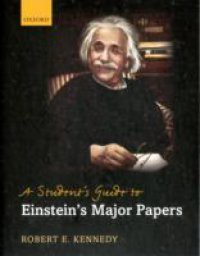Our understanding of the physical universe underwent a revolution in the early twentieth century - evolving from the classical physics of Newton, Galileo, and Maxwell to the modern physics of relativity and quantum mechanics. The dominant figure in this revolutionary change was Albert Einstein. In a single year, 1905, Einstein produced breakthrough works in three areas of physics: on the size and the effects of atoms; on the quantization of the electromagnetic field; and on the special theory of relativity. In 1916 he produced a fourth breakthrough work, the general theory of relativity. A Student's Guide to Einstein's Major Papers focuses on Einstein's contributions, setting his major works into their historical context, and then takes the reader through the details of each paper, including the mathematics. This book helps the reader appreciate the simplicity and insightfulness of Einstein's ideas and how revolutionary his work was, and locate it in the evolution of scientific thought begun by the ancient Greek natural philosophers.

